15 Easy To Grow Houseplants: Favorites That Are In It For The Long Haul
With our crazy and busy lives, aren’t we always looking for shortcuts and ways to create more free time? Who has an hour a day to take care of their indoor plants? I’ve compiled a list of 15 houseplants which are easy to maintain and not at all hard to grow. These green beauties are my tried and true favorites which are in it for the long haul; no 6 month wonders here.
There are so many great houseplants on the market but many of them are fickle and not at all long lasting in our homes. Spending $100 dollars a month replacing plants isn’t something I want to do and most likely that’s the case for you too.
I started my horticultural career in the field of interior plantscaping and spent 12 years both maintaining and spacing out plants on commercial accounts. The plants listed below are the ones which had the best survival rates in offices, lobbies, hotels, malls, and airports. Tough environments indeed!
Confused about how often to water your houseplants? Check out my Guide to Watering Indoor Plants. There’s no definitive answer as to how often because so many variables come into play. I answer questions and give you things to think about which will help you when it comes to watering your indoor plants.
Some of Our General Houseplant Guides for Your Reference:
- 3 Ways To Successfully Fertilize Indoor Plants
- How to Clean Houseplants
- Winter Houseplant Care Guide
- Plant Humidity: How I Increase Humidity For Houseplants
- Buying Houseplants: 14 Tips For Indoor Gardening Newbies
- 11 Pet-Friendly Houseplants
15 easy-to-grow houseplants
These hanging, tabletop and floor plants were chosen because they’re not at all fussy, don’t require any misting, are relatively pest-free, easy to find, and only need fertilizing once a year. There is nothing new or ground breaking here but it’ll make your life a wee bit easier.
I’ve listed plants for low, medium and high light conditions and explain a little bit about that at the end. You can also find all of them, except for the ZZ Plant (keep on meaning to add that!), in our houseplant care book Keep Your Houseplants Alive.
Pothos or Devils Ivy (Epipremnum aureum)
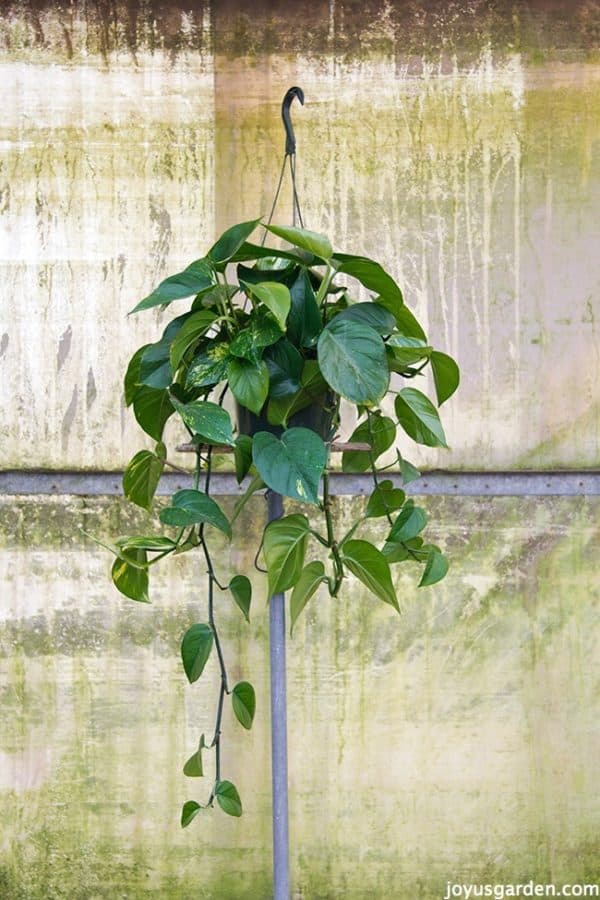
Hanging or tabletop plant. Tabletop means it sits on a table, bookshelf, bureau, cabinet, shelf, etc.
Low to medium light.
For long trails, you can’t really beat this plant. Small roots appear at the leaf nodes making the Pothos easy to propagate in water or soil mix. There are many varieties on the market which run the gamut from solid green to white, silver & chartreuse variegations.
Spider Plant (Chlorophyyum comosum)
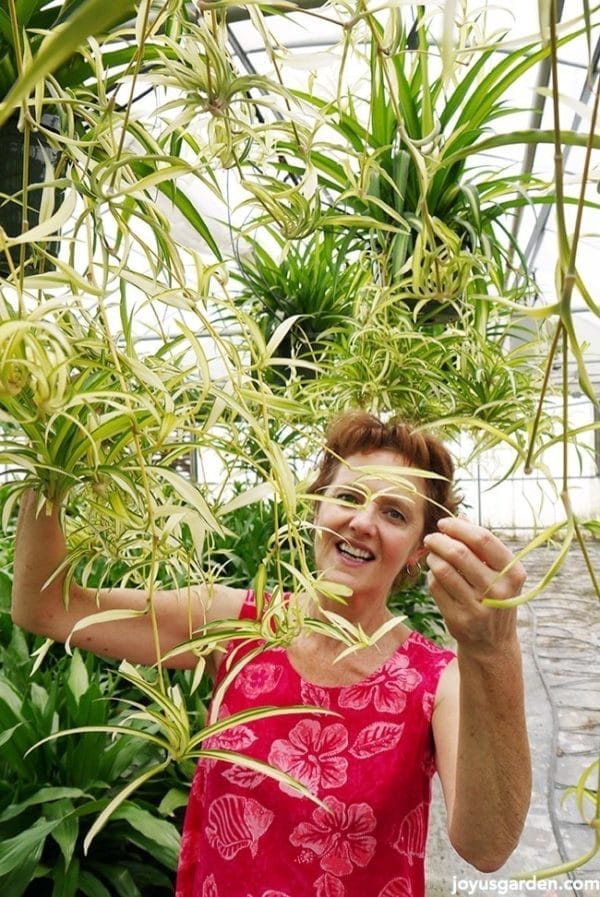
Hanging or tabletop plant.
Medium light.
This is a fun plant because of the babies produced on long, arching stems. This makes them very easy to propagate. Mine grows outdoors here in Tucson year round so you know this plant is tough. It comes in different variegations and also in solid green.
More on Spider Plant care here
1 Way to Get More Spider Plant Babies
Hoya, Wax Plant
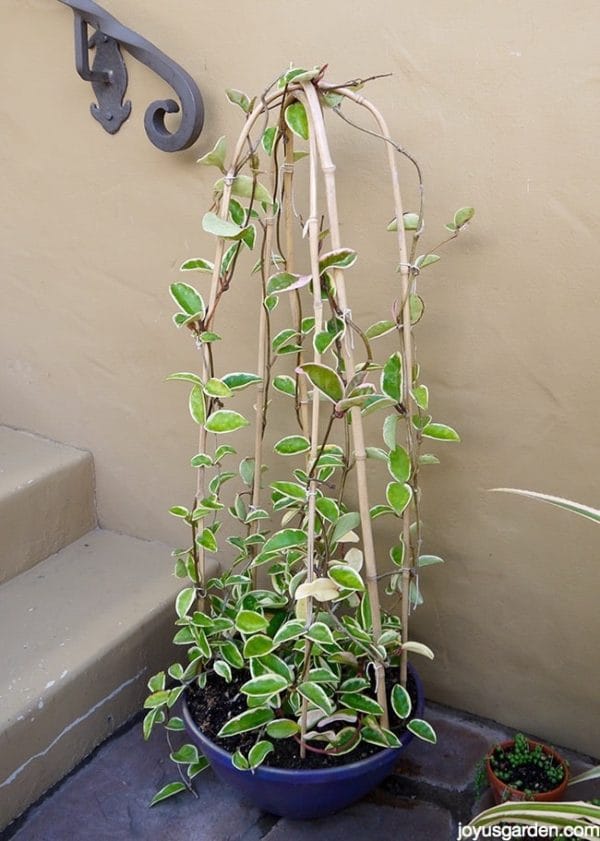
Hanging or tabletop plant.
Medium to high light.
Hoyas are succulent-like plants but they’re really not succulents. They’re slower growing indoors but very tough and attractive. And yes, they do flower. The higher the light you have them in, the better the chance of flowering. They can be subject to mealybugs so just keep your eyes open and get after them quickly. I love, love these plants. You can see my handsome new Hoya obavata in the video. There are many different Hoyas to choose from so you can find a leaf shape, color and form that you’ll love.
Aloe vera
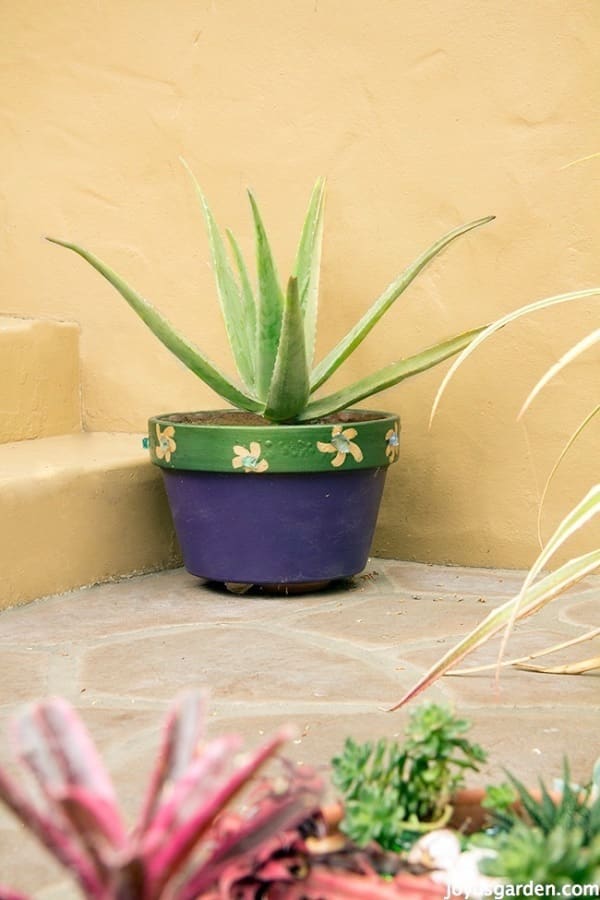
Tabletop plant.
Medium to high light.
This is truly a plant with purpose as it’s used externally and taken internally. Aloe vera is a great plant to have in the kitchen or the bathroom so it’s close at hand. This one gives a deserty feel and looks great in clay pots. This is a succulent so be very careful not to overwater it.
Jade Plant (Crassula ovata)
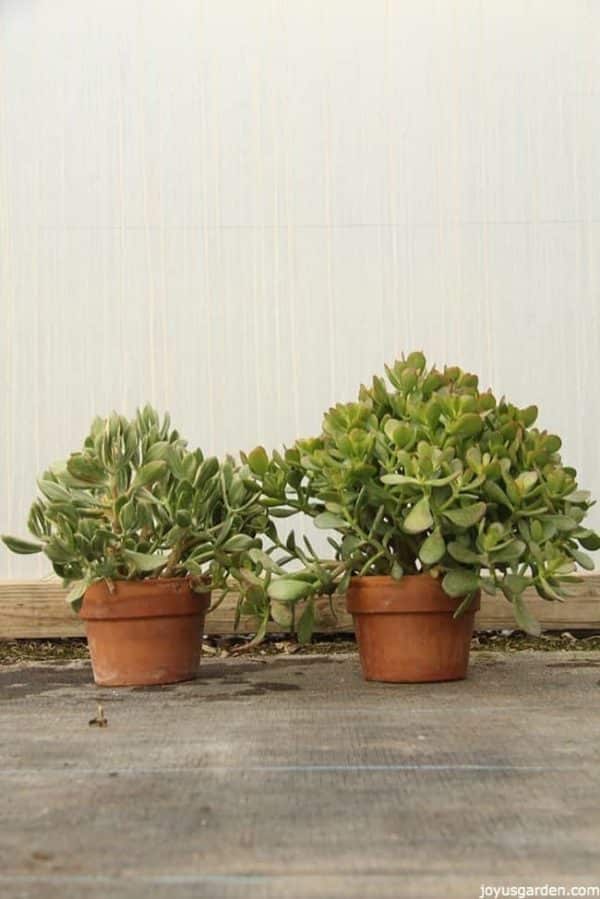
Tabletop plant.
High light.
Jade Plants are also succulents and have glossy green, plump leaves. As they get bigger they develop quite a trunk structure and also get quite heavy. If you’re into bonsai, this plant is an excellent candidate. Go easy on the watering with this one. It comes in a few variegated forms as well as a small leaved variety but those are more commonly seen in the landscape trade.
Bromeliads; There are many genus & species of these.

Tabletop plants.
Medium to high light.
These colorful plants add a pop of color and a real tropical feel to your home. They’re very easy to grow but know that the more light you give them, the more color they’ll show. Many on the market provide a wide range of foliage colors and patterns as well as flowers. Just know that the mother plant eventually dies after flowering but the pups (the babies or offshoots) live on.
- Aechmea Care
- Guzmania Care
- Pink Quill Plant Care
- Neoregelia Care. (these are my favs – the foliage is the star & they last a really long time).
Snake Plant, Mother In Law Tongue; Sansevierias

Tabletop or floor plant.
Low to high light.
Snake Plants are very versatile in that they can grow in a wide range of light levels. Just keep them out of direct, hot sun because like all these houseplants listed here, they’ll burn. Most of mine are tabletop plants but my 3’ trifasciata sits on the floor. Snake Plants are great for people who travel (they love to be ignored!) or if you’re in a dry climate like mine.
- Snake Plant Care
- More on Snake Plant care here
- How to Repot Snake Plants
- 3 Ways to Propagate Sansevierias
ZZ Plant (Zamioculcas zamiifolia)
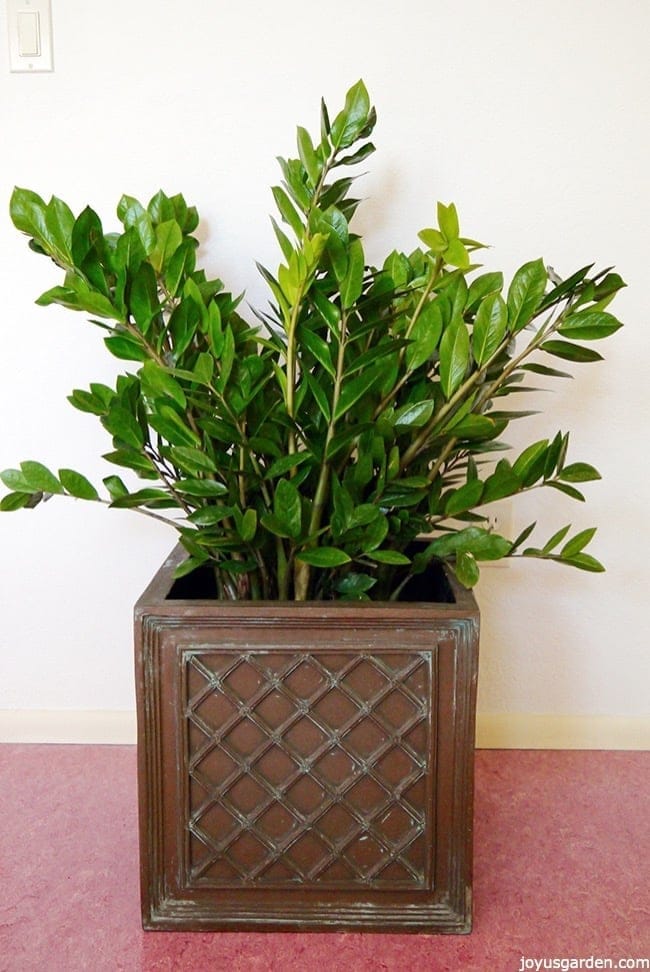
Tabletop or floor plant.
Low to medium light.
It’s billed as a low light plant, but like most in this category, does best and will grow much faster in medium light. The shiny foliage is so attractive and this plant rarely shows a brown tip. I just divided mine into 3 plants because it had grown so much in a year. Some of the stems broke off as I was doing this and they’re easily rooting in water.
Propagating a ZZ Plant by Division.
Ags, Chinese Evergreen; Aglaonemas

Tabletop or floor plant.
Low to medium light.
We speced this plant a lot in commercial accounts – it’s was the quintessential file top plant. All the varieties have lovely patterned foliage and the newer ones even have splashes of pink in them. The old standby, Chinese Evergreen, has the darkest foliage and handles low light the best. I haven’t done a post or video on this plant yet, but if you want one, just let me know!
Ponytail Palm, Elephant’s Foot; Beaucarnea recurvata

Tabletop or floor plant.
High light.
The Ponytail Palm is usually seen as a tabletop plant because they grow slowly (especially indoors) and the larger specimens are quite expensive. This crazy, wacky plant has twirling, cascading leaves which jazz up any home environment. This one is also good for people who travel because of it’s low water requirements. There is also a variegated form of this plant which is sold in the landscape trade.
How to Care For & Repot a Ponytail Palm.
Transplanting a Large Ponytail Palm.
Cast Iron Plant; Aspidistra elatior

Tabletop or floor plant.
Low to medium light.
The common name says it all – this is one tough cookie. The dark green, large leaves raise up on skinny stems giving it a look similar to flames. Cast Iron Plants are good for darker corners, in hallways & even under stairways. There are a few variegated forms or this plant and some have smaller leaves.
Kentia Palm; Howea forsteriana
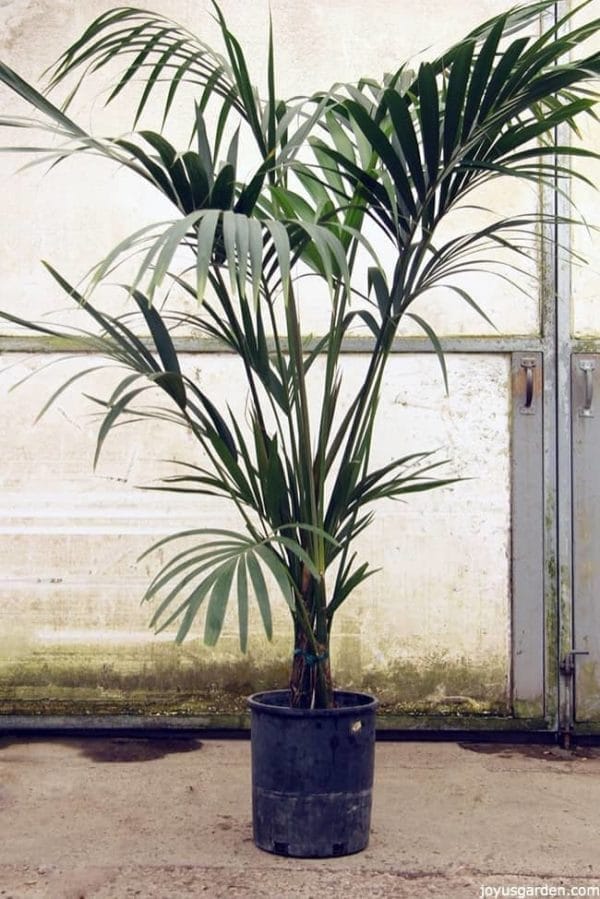
Floor plant.
Low to medium light.
This is a graceful and elegant plant with an arching form. Kentias grow very slowly, only putting out 1 frond per year. Even though they’re more expensive than some other palms, they’re very well suited to interiors. This isn’t a narrow plant – the taller they get, the more room they take up width wise.
Dracaena Janet Craig, Dracaena Lisa; Dracaena deremensis “Janet Craig” & “Lisa”

Floor plant.
Low to medium light.
In my days as an interior landscaper, “Janet Craig” was the only variety on the market. We put a lot of these in offices, malls, lobbies, etc. Now the variety “Lisa” has come on the scene. This one has narrower leaves but the same glossy, dark green foliage as JC. Both are sold by the cane (stem) usually with 3-5 per pot so you get the foliage heads at different levels giving a staggered look.
Dracaena Janet Craig (Lisa) Care.
Corn Plant, Dracaena massangeana: Dracaena fragrans(aka deremensis)“massangeana”

Floor plant.
Low to medium light.
The Corn Plant has wider leaves than the Janet Craig and the Lisa with a bright chartreuse stripe down the center. It resembles corn leaves hence the common name. To keep the variegation, make sure this plant is growing in medium light. Otherwise, it’ll revert to solid green which is known as Dracaena fragrans. This is usually sold in the staggered cane form just like the dracaenas above. It just depends on whether you like a dark glossy leaf, a variegated leaf or a solid medium green (the fragrans). I haven’t done a post and video on the corn Plant yet, but if you’d like one, let me know.
Now it’s time to touch briefly on light levels.
I have no experience with artificial light so what I’m referring to here is natural light. Be aware that light levels vary with the seasons so you might have to move your plants closer to a light source in the winter months. Very few houseplants can take strong, direct sun so keep them out of hot windows or else they’ll burn.
- Low light – Low light isn’t no light. This is a northern exposure with no direct light.
- Medium light – This is an east or west exposure with 2-4 of the sun coming in the windows per day.
- High light – This is a west or south exposure with at least 5 hours of the sun coming in per day.
Just know that you can have a low light plant in a medium or high light room but it needs to be at least 10-15’ feet away from the windows. I use my instincts when it comes to light and houseplants. If a plant isn’t doing as well as it should, then I move it. You can find more detailed information on light and houseplants here.
I hope you’ve found this list to be helpful. If you’re new to the world of houseplants, these are great plants to get you going.
Click here for lots more on houseplants.
What are your favorite easy houseplants? Inquiring horticultural minds what to know!
Happy (indoor) gardening & thanks for stopping by,

YOU MAY ALSO ENJOY:
- Repotting Basics: Basics Beginning Gardeners Need To Know
- 15 Easy To Grow Houseplants
- A Guide To Watering Indoor Plants
- 7 Easy Care Floor Plants For Beginning Houseplant Gardeners
- 10 Easy Care Houseplants For Low Light
This post may contain affiliate links, you can read our policies here.
- About the Author
- Latest Posts
Nell, the founder of Joy Us garden, was born into a gardening family and grew up in Connecticut’s countryside. After living in Boston, New York, San Francisco, & Santa Barbara, she now calls the Arizona desert home. She studied horticulture & garden design, working in the field all her life. Nell is a gardener, designer, blogger, Youtube creator, & author. She’s been gardening for a very long time & wants to share what she’s learned with you.
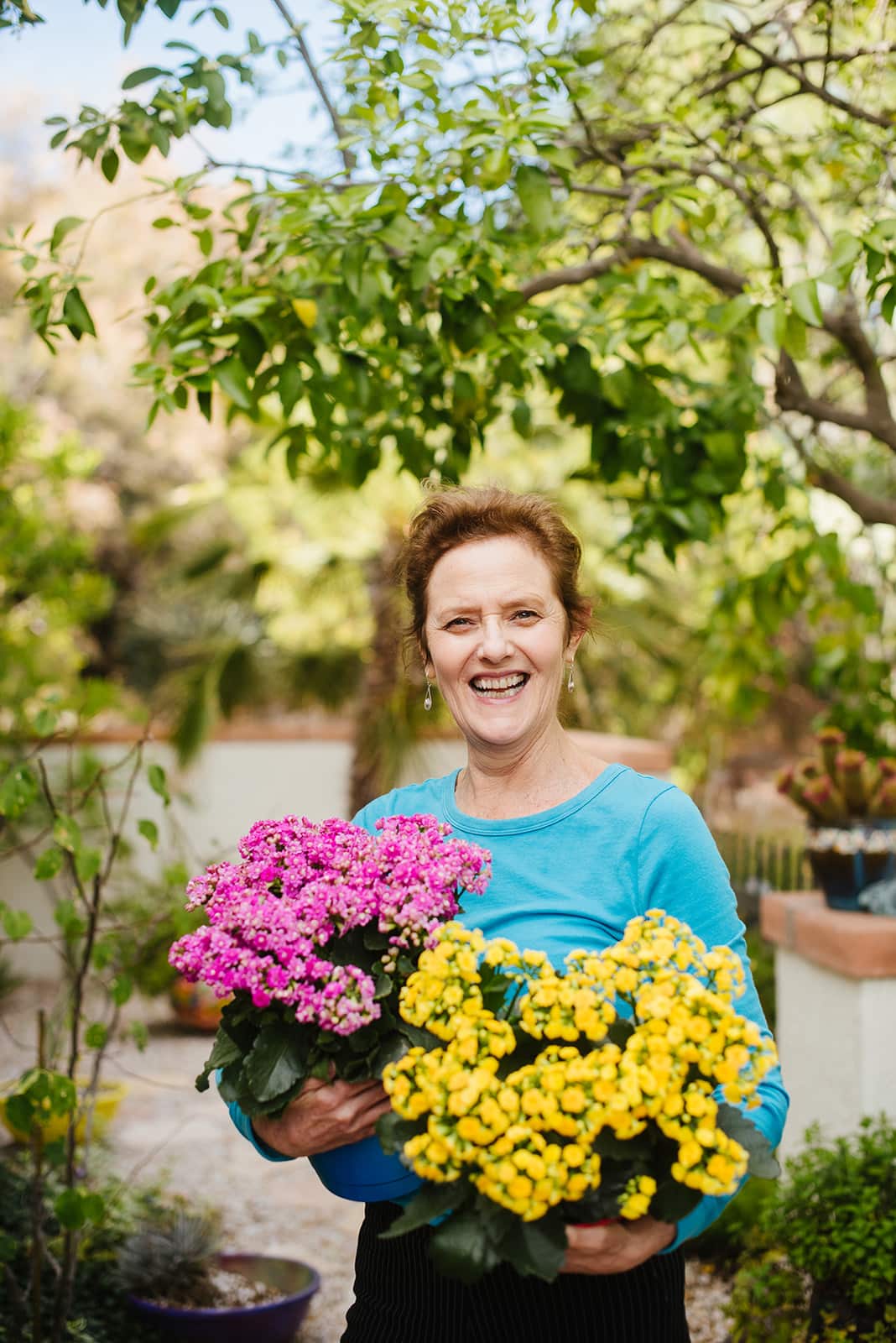
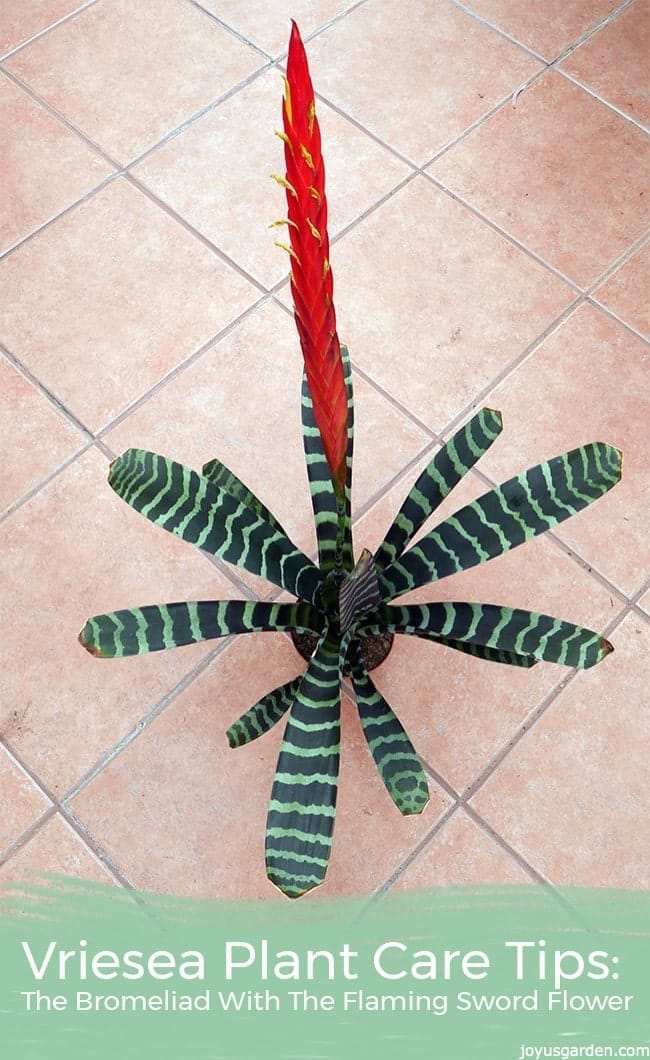
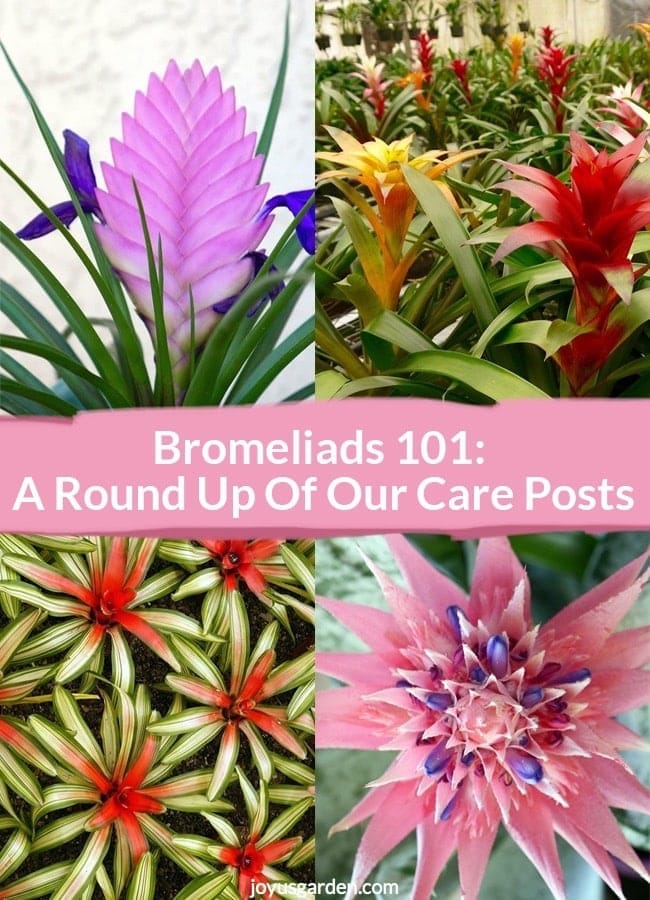
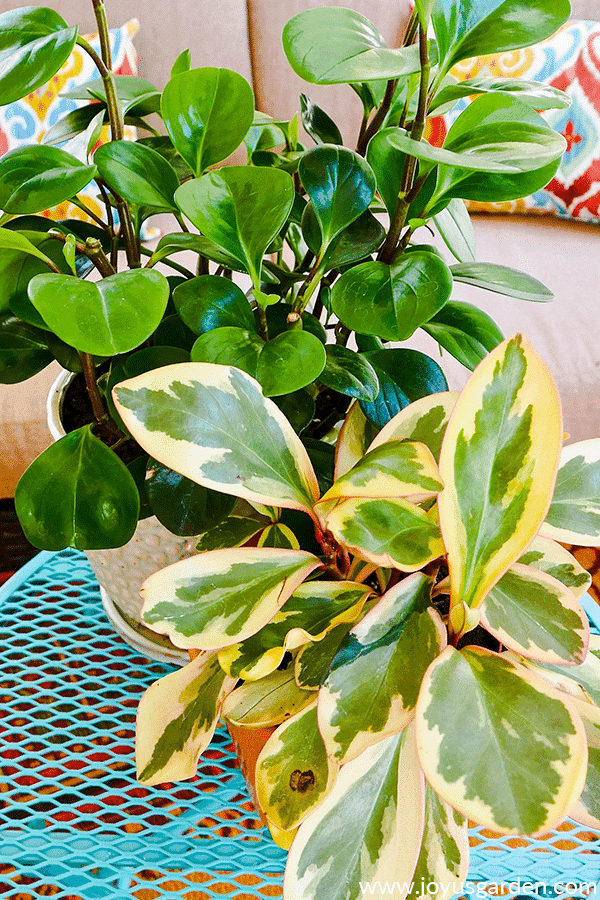
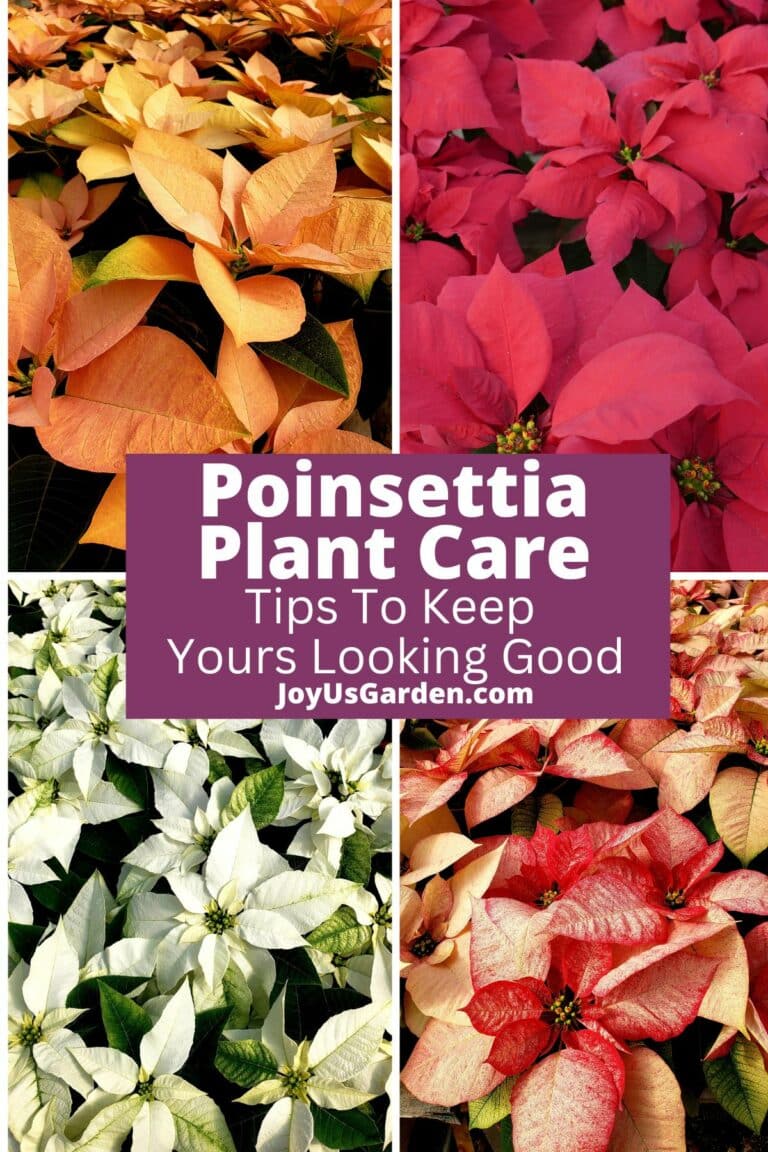

These plants are all gorgeous! I don’t think I can choose only one, I need them all.
Thanks so Lucy! Nell
I have owned house plants for 45 years +. Many plants are quite old. Do you know of anyone who will come to my house to tell me if my plants are in the right places or if they are healthy?
Hi Marla – I’d do a search for “houseplant house calls” & see if anyone pops up in your area. Or, if there’s a nursery with a lot of houseplants or an interior plantscaping company nearby they might do if for you. Hope you find someone! Nell
Marla…. You must be doing a lot of things right for your Plants..
My suggestion go to a Private owned Greenhouse Garden Center….not a big box store, and talk with the owner. They usually know who their expert plant persons are and might charge you a house call.
I have a collection of Tropicals that I bring inside every year, Bouganvillias, Oleander, Durante etc. I no longer bring in Mandevillias because they drop their leaves from lack of sun, get spindly, and GET Pests that can easily infect other plants. House plants are also brought outside to go into container planters for height. Palms are wonderful, Dracena’s, Ti plants , Ferns are also great, Holly F, Western Sword F, Birds Nest Fern, I use them as the Thriller, (top) plant, add Daliah’s, Coleus for (Filler) then assorted Spiller’s: Ivy, asp fern, etc.. Fall is a BIG job bringing everyone in… first plants are taken out of Mixed containers.. and replanted in same plant same container. plants that require low light from a grow lite bulb go to plant room in basement. Blooming plants that require more light get to stay in the 3 sided window sunroom.. I also have a propagation area set up down stairs to divide and propagate plants : succulents, spider plants, etc are then sold in early spring to help pay for new plants. we travel to florida and go to garden centers, purchase, pack and ship plants to arrive 2 days after we get home.. last year we did Cactus… and they have survived well and are just about to go back outside. of course this is a big job… watering and trimming of the plants… inspecting for bugs.. but it has been a part of me since I was 15 at my first job… in the plant department of a store…. I am 66… and go to work 2 days a week for a Greenhouse April & May.. my hourly pay is of course more plants……
Hi Peggy – Yes, you do have an operation going on there. It takes me some time to water all my plants but I enjoy it. I used to work at a nursery in Berkeley, CA so I do recommend seeking advice at a reputable garden center. I took home way too many plants but it’s a wonderful addiction. Nell